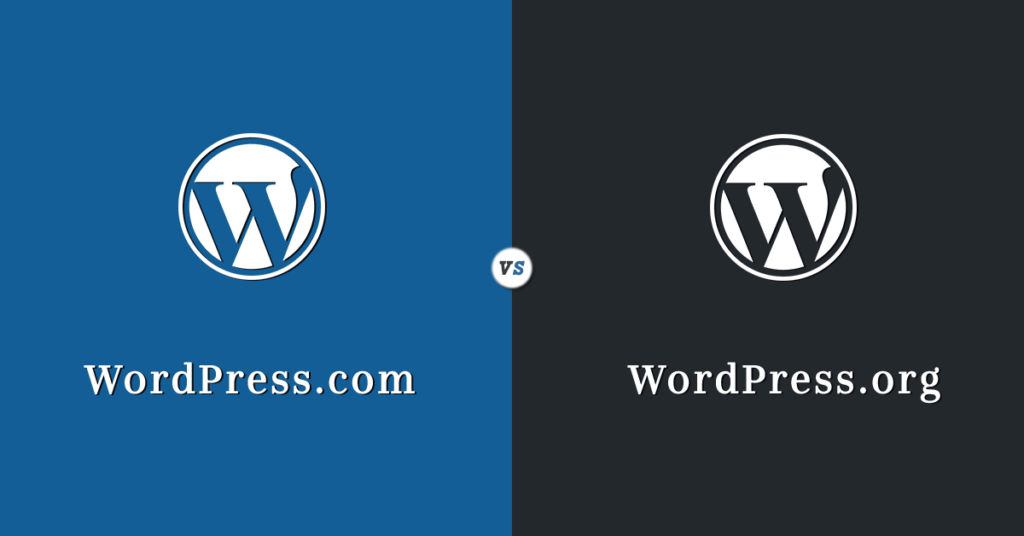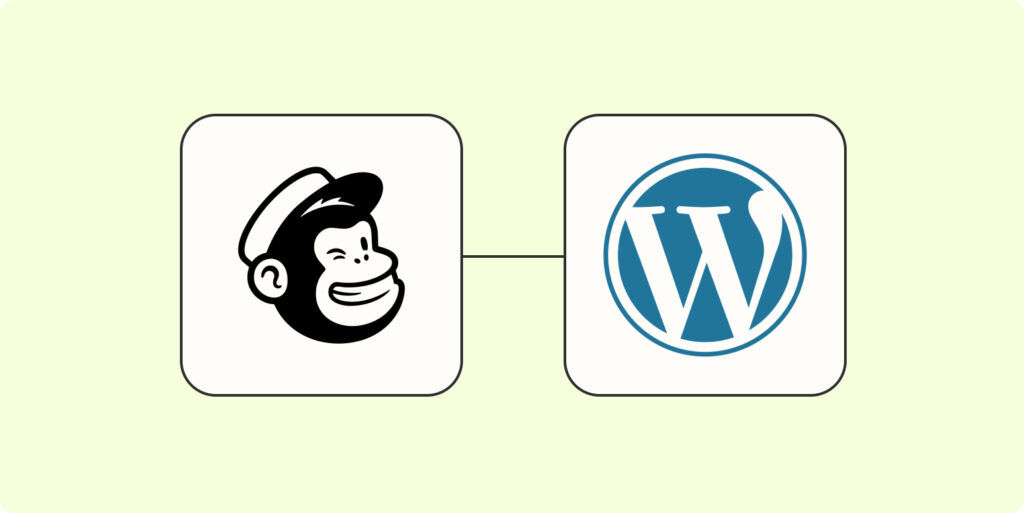When it comes to creating impactful and successful websites, landing pages play a crucial role in capturing the attention of visitors and driving conversions. In WordPress, you have the power to create engaging landing pages that effectively communicate your message and entice users to take action. With our winning formula for creating engaging landing pages, we’ll help you unlock the full potential of your WordPress website.
Crafting Engaging Landing Pages in WordPress
Importance of Landing Pages in WordPress
Landing pages serve as the gateway to your website, providing visitors with their first impression of your brand, products, or services. They are designed specifically to convert visitors into leads or customers by focusing on a single goal, such as capturing email sign-ups, promoting a product, or encouraging downloads.
The importance of landing pages in WordPress cannot be overstated. They allow you to tailor your message to a specific audience, increasing relevancy and improving the chances of conversion. By eliminating distractions and providing a clear call-to-action, landing pages guide visitors towards taking the desired action, whether it’s making a purchase, filling out a form, or requesting more information.
With the flexibility and customization options offered by WordPress, you have the ability to create landing pages that align perfectly with your marketing goals and brand identity. By optimizing the design, content, and functionality of your landing pages, you can significantly enhance their effectiveness and drive the desired results.
Our Winning Formula for Creating Engaging Landing Pages
To craft engaging landing pages in WordPress, we follow a proven formula that combines strategic planning, effective design, compelling content, and optimization for conversions and user experience.
- Planning Your Landing Page: Before diving into the design and content creation process, it’s essential to define your goal and target audience, conduct competitor research, and map out the user journey. This groundwork sets the stage for a successful landing page that resonates with your audience and achieves the desired outcome.
- Designing an Effective Landing Page: Choosing the right WordPress theme sets the foundation for an engaging landing page. Optimize the layout and visual elements to create an aesthetically pleasing and user-friendly experience. Use strategic placement of compelling call-to-actions to guide visitors towards conversion.
- Writing Engaging Content: Crafting a captivating headline is crucial for grabbing attention and enticing visitors to explore further. Communicate the value proposition effectively, highlighting the benefits and unique selling points of your offering. Implement persuasive copywriting techniques, such as storytelling and social proof, to build trust and credibility.
- Optimizing for Conversions: Implement effective forms and opt-in elements to capture visitor information and generate leads. Incorporate social proof and testimonials to instill confidence in your audience. Utilize A/B testing to fine-tune your landing page for maximum performance and conversion rates.
- Enhancing User Experience: Optimize page load speed to prevent visitors from bouncing due to slow loading times. Ensure your landing page is responsive and mobile-friendly to accommodate users on various devices. Implement clear navigation and user flow to guide visitors through the conversion process seamlessly.
By following this winning formula, you can create engaging landing pages in WordPress that captivate your audience, drive conversions, and ultimately contribute to the success of your online business.
Next, let’s dive into the planning phase and explore the importance of defining your goal, understanding your target audience, conducting competitor research, and mapping out the user journey.
Planning Your Landing Page
Before diving into the process of creating an engaging landing page in WordPress, it’s essential to establish a solid plan. This involves defining your goal and target audience, conducting competitor research, and mapping out the user journey.
Defining Your Goal and Target Audience
To create an effective landing page, you must have a clear understanding of your goal and target audience. Define the purpose of your landing page, whether it is to generate leads, promote a product, or increase conversions. Having a specific goal in mind helps you design and structure your landing page accordingly.
In addition to defining your goal, it is crucial to identify your target audience. Consider their demographics, interests, and pain points to tailor your landing page to their needs. By understanding your target audience, you can craft compelling content and design elements that resonate with them and increase the chances of conversion.
Conducting Competitor Research
Competitor research plays a vital role in creating a successful landing page. Analyzing your competitors’ landing pages enables you to identify industry trends, gain insights into what works, and discover areas for improvement.
Take note of the design elements, content strategies, and call-to-action techniques used by your competitors. This information can inspire you to incorporate effective elements into your own landing page while maintaining your unique selling proposition.
Mapping Out the User Journey
To ensure a seamless user experience, it is essential to map out the user journey on your landing page. Put yourself in the shoes of your audience and consider the steps they will take from arriving on the page to completing the desired action.
Start by planning a clear and concise headline that grabs attention and communicates your value proposition. Create a logical flow of content that guides users through the page, highlighting the benefits of your offer along the way. Incorporate persuasive copywriting techniques to engage the reader and encourage them to take action.
By mapping out the user journey, you can identify potential roadblocks or areas where users may drop off. This allows you to optimize your landing page and increase the chances of conversion.
With a well-defined goal, a deep understanding of your target audience, competitor insights, and a mapped-out user journey, you are ready to move on to the next steps of creating an engaging landing page in WordPress.
Designing an Effective Landing Page
When it comes to crafting an engaging landing page in WordPress, the design plays a crucial role in capturing the attention of your visitors and encouraging them to take action. In this section, we will explore three key aspects of designing an effective landing page: choosing the right WordPress theme, optimizing the layout and visual elements, and utilizing compelling call-to-actions.
Choosing the Right WordPress Theme
Selecting the appropriate WordPress theme is a critical step in creating an effective landing page. Look for a theme that aligns with the purpose and style of your landing page. Consider factors such as responsiveness, customization options, and compatibility with popular plugins. A well-designed theme will provide a solid foundation for your landing page and ensure a professional and visually appealing user experience.
Optimizing the Layout and Visual Elements
The layout and visual elements of your landing page have a significant impact on its effectiveness. Keep the design clean, uncluttered, and visually appealing. Use high-quality images and videos that are relevant to your offering and help convey your message effectively. Utilize whitespace strategically to enhance readability and guide the user’s attention to key elements.
Consider using a clear and prominent headline that immediately grabs the visitor’s attention and communicates the value proposition of your product or service. Break up the content into scannable sections using headings, subheadings, and bullet points to make it easier for visitors to absorb the information. Remember to include relevant internal links to other articles or pages within your website to provide additional information or resources.
Utilizing Compelling Call-to-Actions
A compelling call-to-action (CTA) is crucial for driving conversions on your landing page. It should be visually appealing, prominently placed, and clearly communicate the desired action. Use action-oriented language and create a sense of urgency or exclusivity to encourage visitors to take immediate action.
Consider using contrasting colors for your CTA buttons to make them stand out. Position them strategically within the layout, ensuring they are easily accessible and visible. Test different variations of CTAs to determine what works best for your target audience. Remember to track and analyze the performance of your CTAs to continuously optimize their effectiveness.
By carefully considering the choice of WordPress theme, optimizing the layout and visual elements, and utilizing compelling call-to-actions, you can design an effective landing page that engages your visitors and drives conversions. Don’t forget to regularly test and refine your design based on user feedback and performance analytics to ensure the ongoing success of your landing page.
Writing Engaging Content
When it comes to creating engaging landing pages in WordPress, the content you include plays a crucial role in capturing the attention of your audience and compelling them to take action. In this section, we will explore three key aspects of writing engaging content for your landing pages: crafting a captivating headline, communicating the value proposition, and implementing persuasive copywriting techniques.
Crafting a Captivating Headline
The headline of your landing page is the first thing visitors see and it needs to grab their attention immediately. A captivating headline should be concise, clear, and highlight the unique value your product or service offers. It should pique curiosity and entice visitors to continue reading.
To craft a captivating headline, consider using power words or emotional triggers that resonate with your target audience. Incorporate keywords that are relevant to your offering and address a specific pain point or desire. Experiment with different headline variations and conduct A/B testing to determine which performs best.
Communicating the Value Proposition
Once you’ve captured your visitors’ attention with a captivating headline, it’s important to clearly communicate the value proposition of your product or service. Your value proposition should clearly explain what sets your offering apart from the competition and how it solves a problem or fulfills a need.
To effectively communicate your value proposition, focus on the benefits your product or service provides rather than just its features. Use concise and persuasive language to convey the value visitors will receive by engaging with your offering. Highlight any unique selling points or special offers that can further entice visitors to take action.
Implementing Persuasive Copywriting Techniques
The art of persuasive copywriting can greatly enhance the impact of your landing page content. By employing specific techniques, you can influence your visitors and increase the likelihood of conversions. Here are a few key techniques to consider:
- Scarcity: Create a sense of urgency by highlighting limited quantities or time-limited offers. This can motivate visitors to take action immediately rather than delaying their decision.
- Social Proof: Incorporate testimonials, reviews, or case studies to showcase the positive experiences of past customers. Social proof helps build trust and credibility, encouraging visitors to follow suit.
- Emotional Appeal: Tap into the emotions of your target audience by using storytelling or relatable scenarios. Emotional connections can be powerful motivators for action.
- Call-to-Action: Include clear and compelling calls-to-action (CTAs) throughout your landing page. CTAs should be action-oriented and guide visitors towards the desired conversion, such as signing up for a newsletter or making a purchase.
By implementing these persuasive copywriting techniques, you can create content that not only engages your audience but also motivates them to take the desired action.
Remember, the content on your landing page should be concise, focused, and aligned with your overall marketing message. It should clearly communicate the benefits and value of your offering, while utilizing persuasive techniques to drive conversions. Keep refining and testing your content to optimize its impact and ensure it resonates with your target audience.
Optimizing for Conversions
In order to maximize the effectiveness of your landing pages, it’s crucial to optimize them for conversions. Here are some key strategies to implement for better conversion rates on your WordPress landing pages.
Implementing Effective Forms and Opt-in Elements
Forms and opt-in elements play a vital role in capturing visitor information and converting them into leads. When designing your landing page, ensure that your forms are strategically placed and visually appealing. Here are a few tips to optimize your forms and opt-in elements:
- Keep forms simple and concise, asking for only essential information.
- Use clear and compelling call-to-action (CTA) buttons to encourage form submissions.
- Utilize form plugins or integrations available on WordPress to streamline the form creation process.
- Offer incentives such as free ebooks, discounts, or newsletters to entice visitors to provide their information.
By implementing effective forms and opt-in elements, you can gather valuable data and generate leads for your business.
Adding Social Proof and Testimonials
Social proof and testimonials are powerful tools for building trust and credibility with your landing page visitors. Incorporating social proof elements such as customer testimonials, reviews, or case studies can significantly influence a visitor’s decision to convert. Consider these best practices when using social proof:
- Display testimonials prominently on your landing page to catch visitors’ attention.
- Include customer photos and names (with their permission) to add authenticity.
- Highlight specific benefits or results achieved by customers to showcase the value of your offering.
By leveraging social proof, you can alleviate any doubts or hesitations your visitors may have, leading to increased conversions.
Utilizing A/B Testing to Optimize Performance
A/B testing, also known as split testing, is a method of comparing two versions of a landing page to determine which performs better. By conducting A/B tests, you can identify elements that positively impact conversion rates and optimize your landing pages accordingly. Here’s how to approach A/B testing:
- Start by identifying the elements you want to test, such as headlines, CTAs, or form placements.
- Create two versions of your landing page, each with a single variation of the element being tested.
- Direct an equal amount of traffic to each version and monitor their performance using analytics tools.
- Analyze the results and determine which variation yields higher conversion rates.
A/B testing allows you to continuously refine your landing pages and optimize them for better conversion rates over time.
Optimizing for conversions is an ongoing process that requires careful analysis and adjustment. By implementing effective forms and opt-in elements, leveraging social proof and testimonials, and utilizing A/B testing, you can fine-tune your landing pages to drive higher conversion rates and achieve your business goals.
Enhancing User Experience
A crucial aspect of creating engaging landing pages in WordPress is enhancing the user experience. By optimizing page load speed, ensuring responsiveness and mobile-friendliness, and implementing clear navigation and user flow, you can create a seamless and enjoyable experience for your visitors.
Optimizing Page Load Speed
Page load speed plays a significant role in user experience and overall website performance. Slow-loading pages can lead to frustration and high bounce rates. To optimize page load speed, consider the following techniques:
- Optimize Images: Compress and resize images to reduce file size without compromising quality. Utilize plugins or online tools to automate this process.
- Minimize HTTP Requests: Reduce the number of HTTP requests by combining CSS and JavaScript files, and utilizing browser caching.
- Enable Gzip Compression: Enable Gzip compression to reduce the size of HTML, CSS, and JavaScript files, allowing them to load faster.
- Utilize a Content Delivery Network (CDN): CDN services distribute your website’s static content across multiple servers, reducing the distance between the user and the server for faster loading times.
Ensuring Responsiveness and Mobile-Friendliness
In today’s mobile-driven world, it’s imperative that your landing pages are responsive and mobile-friendly. With an increasing number of users accessing websites on mobile devices, it’s crucial to prioritize their experience. Consider the following practices:
- Responsive Design: Ensure that your landing page design adapts seamlessly to different screen sizes and resolutions, providing a consistent and optimized experience across devices.
- Mobile-Friendly Navigation: Optimize your navigation menu for mobile devices by using collapsible menus or hamburger icons to save screen space and improve usability.
- Touch-Friendly Elements: Make sure that buttons, links, and interactive elements are large enough and spaced appropriately for easy navigation on touchscreens.
- Test on Multiple Devices: Regularly test your landing pages on various devices and screen sizes to ensure they display correctly and function smoothly.
Implementing Clear Navigation and User Flow
A clear and intuitive navigation structure is essential for guiding visitors through your landing pages. By implementing the following practices, you can create a seamless user flow:
- Logical Menu Structure: Organize your navigation menu in a logical and hierarchical manner, making it easy for visitors to find what they’re looking for.
- Consistent Call-to-Actions: Use consistent and prominent call-to-action buttons throughout your landing pages to guide visitors towards your desired goal.
- Intuitive Forms: If your landing page includes forms, ensure they are user-friendly and require minimal effort. Use form builders or plugins to simplify the process.
- Strategic Placement of Information: Place important information, key benefits, and compelling content in strategic positions on your landing page to capture the user’s attention and encourage further exploration.
By focusing on optimizing page load speed, ensuring responsiveness and mobile-friendliness, and implementing clear navigation and user flow, you can create engaging landing pages in WordPress that provide a seamless experience for your visitors. This, in turn, can lead to higher conversions and overall success in achieving your goals.


